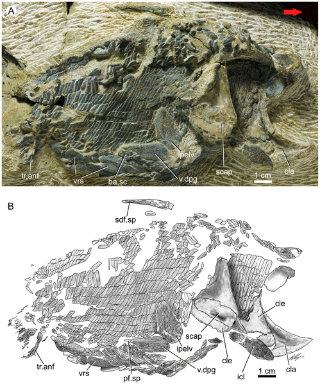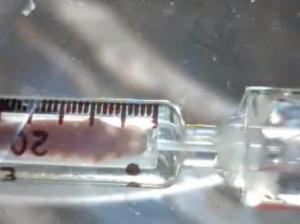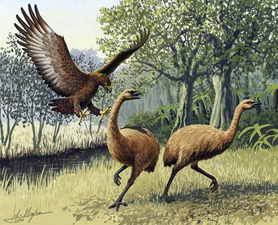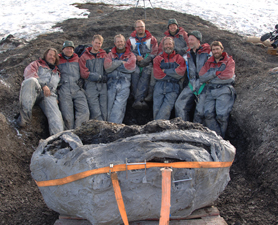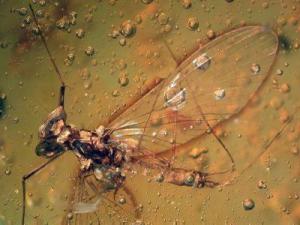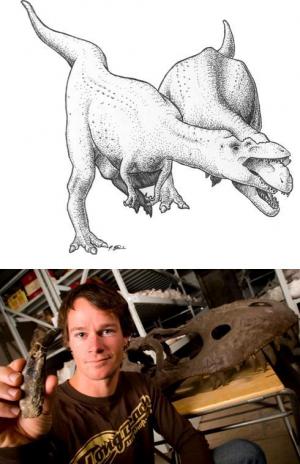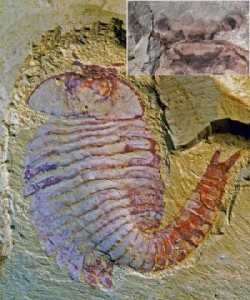What makes some ocean animals more prone to extinction than others? A new study of marine fossils provides a clue.
An analysis of roughly 500 million years of fossil data for marine invertebrates reveals that ocean animals with small geographic ranges have been consistently hard hit — even when populations are large, the authors report.
The oceans represent more than 70% of Earth’s surface. But because monitoring data are harder to collect at sea than on land, we know surprisingly little about the conservation status of most marine animals. By using the fossil record to study how ocean extinctions occurred in the past, we may be better able to predict species’ vulnerability in the future.
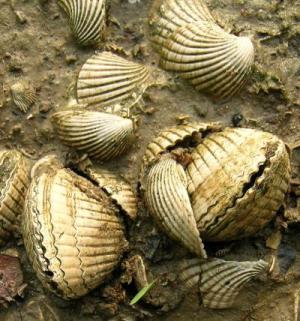
Venericardia densata, extinct species of clam. The location is Claiborne Bluff on the Alabama River, Monroe County, Alabama. The age was middle Eocene (48.6 – 37.2 million years ago) Lisbon Formation. (Credit: Photo by Paul Harnik)
“If the patterns we observed in the fossil record hold for species living today, our results suggest that species with large populations but small ranges are at greater risk of extinction than we might have expected,” said study co-author Paul Harnik of the National Evolutionary Synthesis Center.
Researchers have long assumed that rare animals are more likely to die out. But “rare” could mean multiple things.
The word “rare” could be applied to species that have restricted geographic ranges, or small populations, or that tolerate a narrow range of habitats, or any combination thereof, the authors say.
False killer whales, for example, are considered rare because they occur in small numbers, even though they’re found in oceans throughout the world.
Erect-crested penguins, on the other hand, are considered rare because they’re geographically restricted to remote islands off the coast of New Zealand — even though they’re fairly abundant where they occur.
Harnik and colleagues Jonathan Payne of Stanford University and Carl Simpson of the Museum für Naturkunde in Berlin wanted to know which aspects of rarity best predict why some species survive and others die out.
“It’s only through the fossil record where we have a long-term record of extinction where we can really see whether those relationships hold up,” Harnik said.
To find out, the team scoured a fossil database for marine invertebrates that inhabited the world’s oceans from 500 million years ago to the present — a dataset that included 6500 genera of sea urchins, sand dollars, corals, snails, clams, oysters, scallops, brachiopods and other animals.
When the researchers looked for links between extinction rate and measures of rarity, they found that the key predictor of extinction risk for ocean animals was small geographic range size.
Habitat breadth played a secondary role, whereas population size had little effect. The result: Ocean animals that both had small geographic ranges and tolerated a narrow suite of habitats were six times more likely to go extinct than common animals were.
“Environmental changes are unlikely to affect all areas equally, or all individuals at the same time in the same way. If something terrible happens to some part of a species’ range, then at least some populations will still survive,” Harnik explained.
Life in the sea was once thought to be less prone to extinction than life on land. But with global warming, overfishing, and ocean acidification pushing sea life to its limits, growing evidence suggests otherwise.
“The findings don’t mean that when populations dwindle we shouldn’t worry about them,” Harnik said.
“But the take home message is that reductions in range size — such as when a species’ habitat is destroyed or degraded — could mean a big increase in long-term extinction risk, even if population sizes in the remaining portions of the species’ range are still relatively large.”
The results will be published this week in the journalProceedings of the Royal Society B













 October 24th, 2012
October 24th, 2012  riffin
riffin 